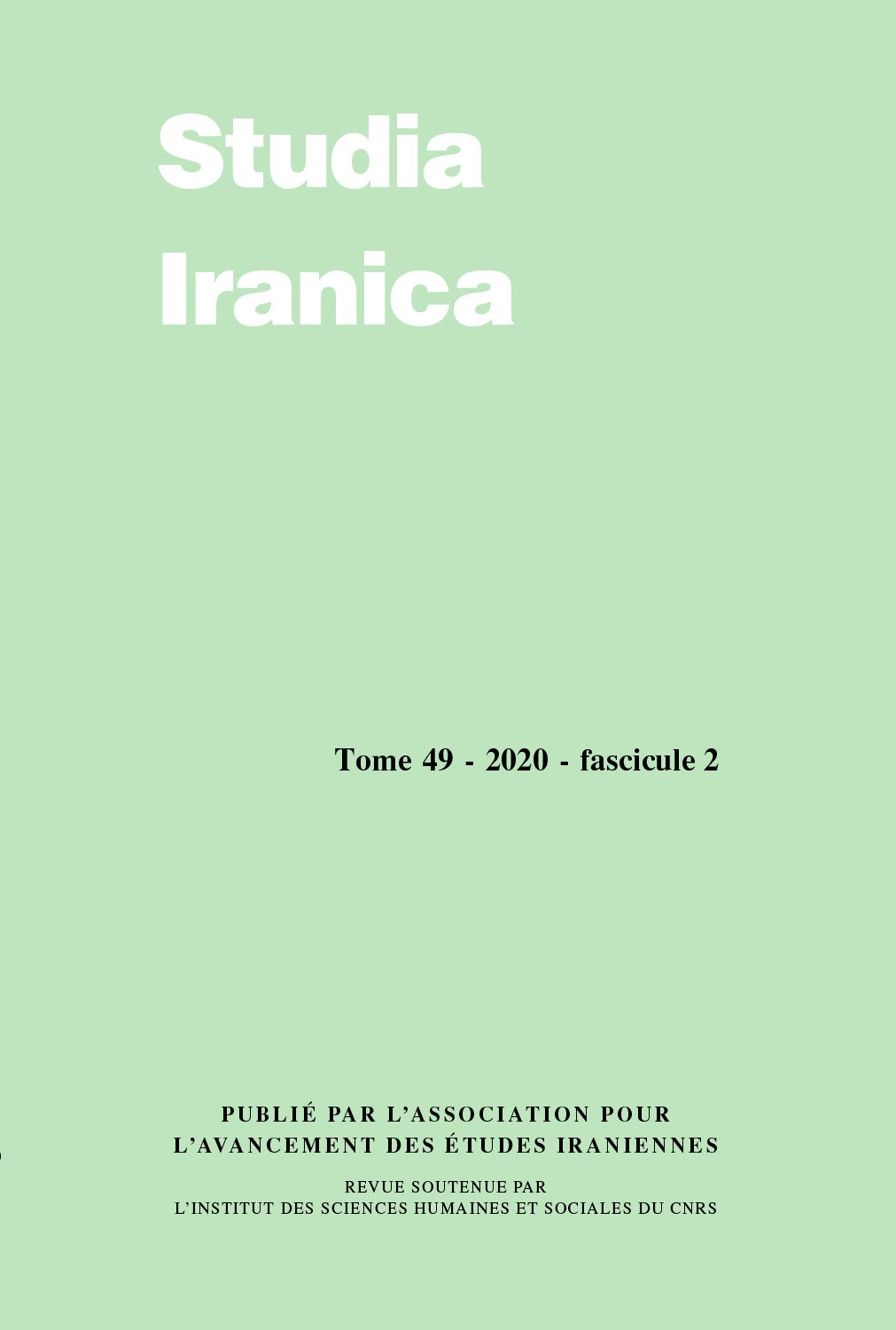 previous article in this issue previous article in this issue | next article in this issue  |

Preview first page |
Document Details : Title: Kokand Men and Women of Letters who Wrote Both in Chaghatāy and Persian (First Half of the 19th Century) Author(s): GRASSI, Evelin Journal: Studia Iranica Volume: 42 Issue: 2 Date: 2013 Pages: 227-248 DOI: 10.2143/SI.42.2.3015338 Abstract : In the Kokand literary milieu, the parallel use of Chaghatāy Turkish and Persian was widespread in the first half of the 19th century. In the field of poetry, this is demonstrated not only by the high number of Kokand bilingual collections of poems (bayāż) that have reached us, but also by the poetical activity of various authors who left a bilingual dīvān. The aim of this research is to portray literary life during the heyday of the Kokand Khanate by introducing the creative writings, in both prose and poetry, of some bilingual men of letters (the members of the dynastic family, the satirists and the exiled poets), while also considering the literary activity of the female authors. Durant la première moitié du XIXe siècle, l’usage conjoint du turc chaghatāy et du persan était très répandu dans les milieux littéraires de Kokand. Pour la poésie, cela est avéré non seulement par le nombre élevé de recueils de poèmes (bayāż) qui nous sont parvenus, mais aussi par l’activité poétique de divers auteurs qui nous ont laissé des dīvān bilingues. Le but de cette recherche est de décrire la vie littéraire au moment de l’apogée du khanat de Kokand en présentant les écrits, aussi bien en prose qu’en vers, de certains hommes de lettres bilingues (membres de la famille dynastique, satiristes et poètes exilés), tout en tenant compte aussi de l’activité littéraire des auteurs féminins. |
|


